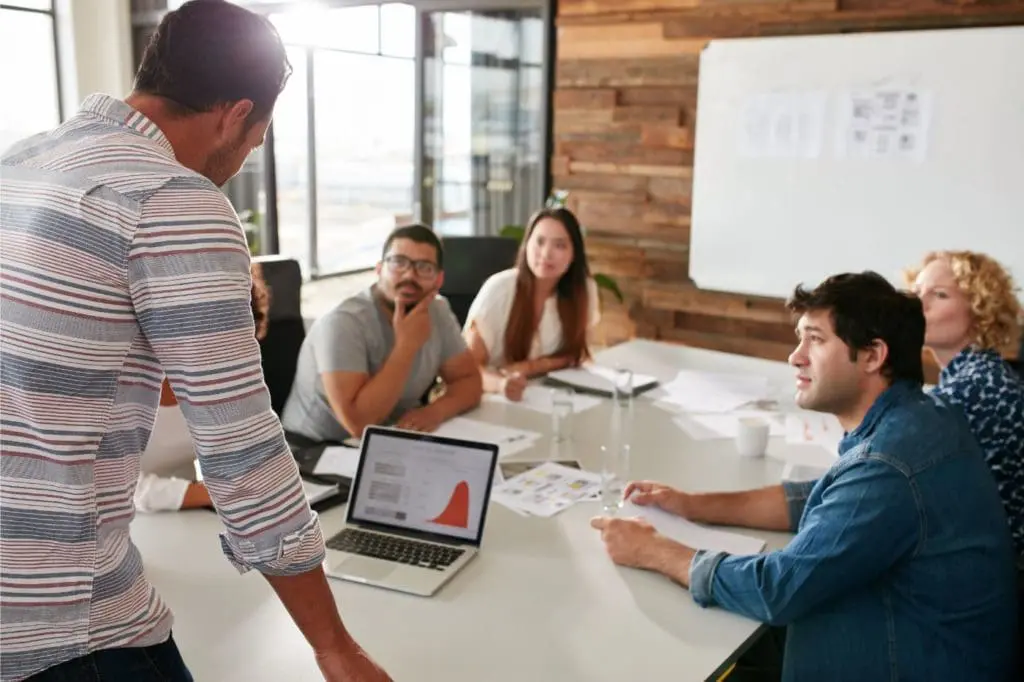
Inbound marketing has proven itself to be much more than the next shiny technology or the latest buzzword. The research shows that nearly 60% of marketers have adopted inbound marketing strategies and more than 80% of those executing inbound marketing have integrated it into broader company goals. People are also investing more in inbound, as budgets for this strategy have grown nearly 50% in each of the past three years.
Here we present 10 lessons learned from the 2013 State of Inbound Marketing report.
10 take-aways from the 2013 State of Inbound Marketing report
1. Inbound is real, and it shows remarkable traction for such a new industry: While inbound marketing is a relatively new industry, it shows sizeable market share and impressive budget growth rates.
- Sixty percent of companies will execute inbound marketing strategies in 2013
- Marketers allocate 34% of their overall budgets to inbound tactics – 11% more than they dedicate to outbound strategies, like banners, direct mail, and more.
- This year, 48% of marketers plan to increase their inbound marketing spending – the third year in a row that inbound budgets are increasing at a near 50% pace.
2. Inbound also delivers on its ROI promises, providing more and cheaper leads that convert at higher rates: Twice as many marketers say inbound marketing delivers below average cost per leads versus outbound strategies. Our survey found that 34% of all the leads generated in 2013 come from inbound marketing sources. In fact, inbound delivers 54% more leads into the marketing funnel than traditional outbound leads.
In 2013, 41% of marketers confirm inbound produces measurable ROI, and a staggering 82% of marketers who blog see positive ROI for their inbound marketing.
Inbound leads also deliver superior cost per lead and cost per customer. In fact, U.S. inbound marketers spending more than $25K per year save an average of 13% in overall cost per lead and more than $14 dollars for every new customer acquired versus those relying on outbound strategies.
3. Traditional marketing is fading: While traditional marketing models have not completely dried up, we found they are dramatically devalued by all marketers in 2013. Seventeen percent of marketers say both traditional advertising and direct mail have become less important in the past six months. Traditional advertising and PPC will deliver the least amount of leads for marketers this year, with just 6% originating from each of these categories.
4. We need to better define what inbound marketing is – and how to measure certain activities: According to our survey results, the industry could benefit from clarification. Some marketers were unsure how to define “inbound marketing.” While the rapid growth we have witnessed to date is impressive – 60% of marketers have currently adopted inbound strategies – there is still room for education, as an additional 19% of marketers are unsure whether to characterize their marketing activities as “inbound.” As the industry matures, and more marketers become educated on the inbound methodology, we expect this confusion to abate.
Similarly, how we report and analyze inbound results has some room for improvement. Some marketers are clearly dedicated to tracking the “hard numbers,” with 15% tying their inbound results directly to revenue or customers/wins generated. Still, a surprising 34% of businesses cannot or do not calculate overall inbound ROI in 2013. Among executives, tracking the ROI in analytics becomes even more important, with 20% of these executives pointing to the need to develop analytics further.
5. As a holistic approach, inbound helps target a fragmented digital audience and make marketing more profitable: Marketers who have embraced inbound recognize that success depends on shifting overall marketing’s focus – and weaving inbound’s content rich, customer-focused strategy through your business practices. The inbound paradigm gets your company working together, rather than looking at a lead as a baton to hand off from one functional group to another.
Inbound marketers also address the fact that consumers’ behavior, which is often fragmented, distracted, and over-stimulated with alerts and content, necessitates tying things together. The web means you can’t lead someone down your funnel step by step.
Your customer controls their own interaction with your online material – a prospect engages with you on their own timetable. One person may look at your site at 10 a.m. every morning, while another will visit only after an email has captured their attention. To be successful at inbound, you need to align your team to be ready and to measure it all together.
This clear alignment of inbound goals makes marketing more profitable. Our survey found the following:
- Companies that establish shared marketing and sales responsibilities see clear improvements in their lead acquisition costs, particularly among enterprise firms. Adopting a marketing-sales agreement saves companies with more than 200 employees an average of $195.84 total cost per customer.
- Inbound concepts boost website conversions: Inbound marketers double the average site conversion rate of non-inbound marketers, from 6% to 12% total Marketers see an average website conversion rate of 10% industry-wide.
- Testing inbound efforts drives major ROI improvements: Companies who test are 75% more likely to show ROI for inbound marketing than those who fail to test their strategies.
In 2013, marketers generally embrace the goal of integrating inbound strategies with larger marketing goals, with 81% of companies reporting some level of this integration. However, executives and sales teams still don’t quite buy in to inbound marketing. When it comes to allocating resources to support inbound efforts, only 11% of company executives and 17% of sales teams lend their full support.
6. Inbound has shifted where marketers spend time, and automation helps them work smarter: Some marketers considering inbound shy away from full-scale adoption due to the perception that inbound marketing is a lot of work. It’s true that to succeed at inbound, you need to commit to the principles. But inbound’s relative time commitment is not all that different from that of traditional methods – inbound just shifts where companies will spend their time. Inbound requires more up-front work, but it results in less time that a sales team will chase tepid, low converting leads. Companies with aggressive growth goals also don’t have the time to call a list that converts at less than 2%.
According to the 2013 State of Inbound Marketing Survey, inbound produces resource efficient leads. For instance, 43% of marketers generated a customer via their blog this year, though the blog requires roughly 9% of marketers’ total full-time staff dedications and just 7% of their total budget. This means that marketers spend 55% more time than budget on blogging.
7. Inbound marketing is not a channel or a technology, it’s a strategy: It’s not enough to “do” inbound. To see real results, you need to deeply commit to the model and optimize continually. Marketers that succeed with inbound marketing dedicate a high level of time, commitment, and resources to getting it right. Inbound marketing is not a quick-fix, nor will your company succeed at inbound by hiring an “inbound expert” and sitting them next to your email, trade show, and website staff member. Successful inbound execution requires a strategic change in how you focus your end-to-end marketing practices, such as building and staying true to your core customer personas and relentlessly tracking your lead gen goals.
This dedication produces dramatic results. Seventy-nine percent of companies who have a blog report a positive ROI for inbound marketing this year, compared with just 20% of those companies that do not have a blog. In fact, 82% of marketers who blog on a daily basis acquired a customer using their blog, as opposed to 57% of marketers who just blog monthly – still an impressive statistic!
8. It’s a good time to be a customer: Coupled with an inbound methodology is the emergence of the customer-centric company. In 2013, it’s not just that “the customer is always right”; according to inbound marketing principles, the customer is the beginning and the end of the equation. Foretelling this shift, 50% of our 2013 survey respondents indicate that they consider their companies to be primarily customer-focused and nearly 2013 State of Inbound Marketing Report 25% of marketers cite reaching the right audience as their top priority for 2013. After all, great marketers have always started with an understanding of their consumers. Now more than ever, it starts and ends with that understanding.
9. It’s also a great time – if a potentially exhausting one – to be an inbound marketer: In general, inbound marketers are working on very small teams. Fifty-one percent of all inbound teams contain fewer than six people. This small team environment is pervasive at every level of the industry; even at the enterprise level, 31% of marketing teams contain five or fewer full-time employees.
Marketers are keenly aware of this resource shortage, and they report the need to hire more inbound marketers to support growth. While marketing teams will begin 2013 with an average five or fewer people, most will at least double by the end of the year. Inbound marketers plan to hire an average of 9.3 people this year, which is 125% more growth than teams not executing inbound marketing. Enterprise companies expect the most growth, expressing plans to hire an average 18.6 full-time marketers this year.
10. Content is a critical, but not standalone, inbound marketing component: Despite the wealth of recent articles heralding the rise of content produced for marketing, our research shows that only 18% of marketers are purely focused on developing quality content in 2013. Finding and converting quality leads and identifying the right audience rank more important in terms of marketers’ overall priorities.
There is evidence supporting the fact that marketers are committed to developing content rich strategies and understand the critical role that content plays – in fact, 10% dedicate at least one full-time team member to developing content, and 9% have either a full-time SEO expert or blog lead. But the data shows that “content marketing” is not quite the panacea some in the industry claim. Rather, content created and distributed by marketers must tie in context on customers, from how they interact with your channels to CRM information to personalized, dynamic targeting and beyond. This approach of “content plus context” helps inbound marketers truly delight consumers and generate more business.
Get the complete 2013 State of Inbound Marketing Report ( 175 pages) FREE
